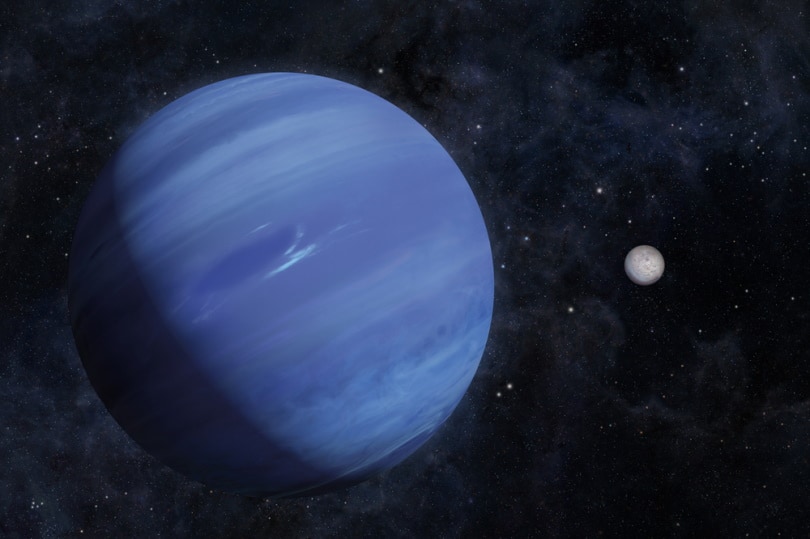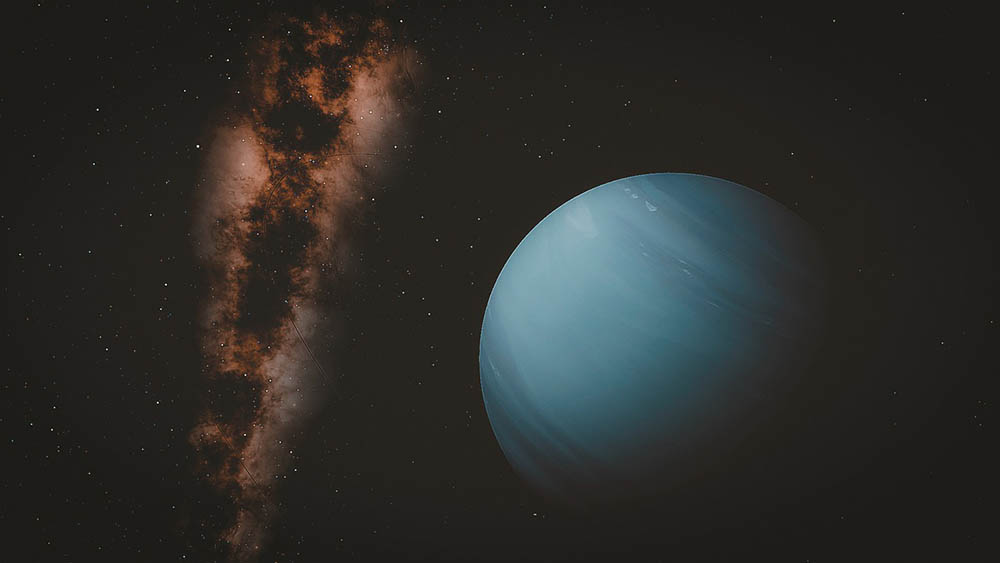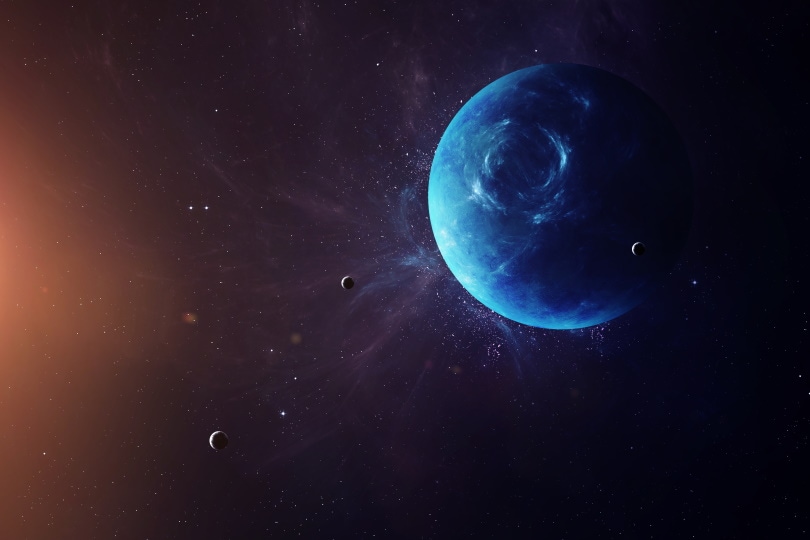Does Neptune Have Rings? The Surprising Answer!
Last Updated on

Everyone knows that Saturn has rings, but is Saturn the only planet with rings? What about Neptune? Surprisingly, Neptune actually has a few rings, though scientists believe that Neptune’s rings are younger than Saturn’s. Not to mention, there are two other planets that have rings in addition to Saturn and Neptune.
To learn how many rings Neptune has and what they’re made from, keep reading. This article takes a close look at the interesting rings found around the planet Neptune.

Does Neptune Have Any Rings?
Surprisingly, Neptune is one of the planets that has a ring system. Neptune’s rings are believed to be relatively young, and they have interesting clumps called arcs.
In fact, these clumps are so unique that they have been studied and the larger ones have been named. The most known arcs are named Liberté, Egalité, Fraternité, and Courage. For all you history buffs out there, the phrase Liberté, Egalité, and Fraternité was the battle cry of the French Revolution. It remains the national motto of both France and the Republic of Haiti today.
These named arcs are located outside of the outermost ring of Neptune, Adams, which we will look at next.

How Many Rings Does Neptune Have?
Because you’ve never heard of Neptune’s rings before, you might think that there’s only one. This is not the case. As mentioned above, Adams is the outermost ring of Neptune. The fact that there is an outermost ring implies that there is more than one.
There are actually at least five main rings around the planet, at least as of 2022. Starting from the ring closest to the planet and moving outwards, the rings of Neptune are named Galle, Leverrier, Lassell, Arago, and Adams. Here’s a look at their sizes and distance from Neptune’s center:
| Name of Ring | Distance from Neptune’s Center | Radial Width |
| Galle | ~26,000 miles (41,900 kilometers) | 9.3 miles (15 kilometers) |
| Leverrier | ~33,100 miles (53,200 kilometers) | 9.3 miles (15 kilometers) |
| Lassell | ~34,400 miles (55,400 kilometers) | N/A |
| Arago | ~35,800 miles (57,600 kilometers) | N/A |
| Adams | ~39,100 miles (62,930 kilometers) | < 31 miles (50 kilometers) |
What Are Neptune’s Rings Made Out Of?
The rings around Neptune are made up of small rocks and dust. The exact composition of the rings’ makeup is not known. Scientists estimate that anywhere from 20%–70% of the rings are made up of dust, whereas the rest is made up of organic matter and rock.
Interestingly, Neptune’s rings are a lot darker than the rings found on Uranus and other planets. This color suggests that the rings are denser and made out of finer dust.

Do Any Other Planets Have Rings?
There are a total of four planets that have rings around them, including Jupiter, Saturn, Uranus, and Neptune. What’s interesting about this is that all these planets are gaseous planets in comparison to terrestrial planets like Earth. Saturn has the most excessive ring system with a total of 12 rings and two divisions. 
Final Thoughts
In conclusion, Neptune is one of the four planets that have a ring system. Scientists currently know that Neptune has five rings and four arcs. Unlike Saturn and other bigger gaseous planets, the rings around Neptune are believed to be young and short-lived.
It will be interesting to see how these rings change over time, though the changes will likely be so minimal during our lives that we don’t see a difference, unfortunately!
- See also: How Many Moons Does Neptune Have?
Featured Image Credit: Pavel Gabzdyl, Shutterstock
About the Author Robert Sparks
Robert’s obsession with all things optical started early in life, when his optician father would bring home prototypes for Robert to play with. Nowadays, Robert is dedicated to helping others find the right optics for their needs. His hobbies include astronomy, astrophysics, and model building. Originally from Newark, NJ, he resides in Santa Fe, New Mexico, where the nighttime skies are filled with glittering stars.
Related Articles:
15 Crucial Facts About Ultraviolet Rays & the Sun
What Constellation Is Spica In? The Interesting Answer!
10 Interesting Leo Constellation Facts, Myths, and FAQs
15 Interesting Pegasus Constellation Facts, Myths, and FAQs
6 Interesting Sagittarius Constellation Facts, Myths, and FAQs in 2024!
What Are Constellations? Where Did They Come From?
8 Interesting Libra Constellation Facts, Myths, and FAQs
What Is Infrared Radiation? Science-Based Facts & FAQ
